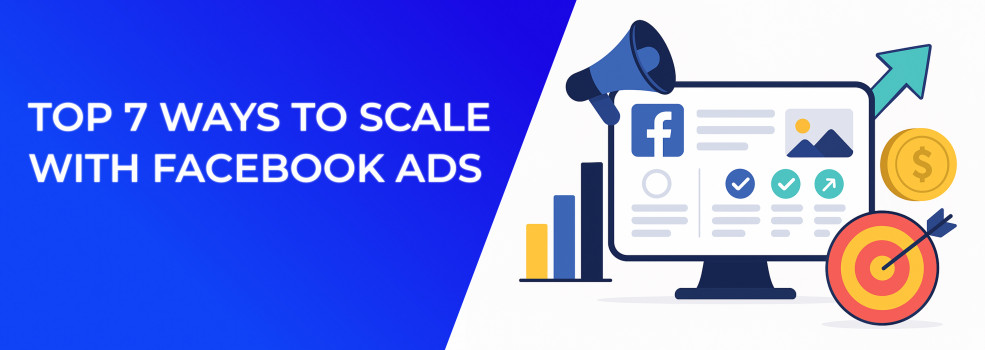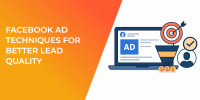Profitable ad accounts are not built on luck. They are built on repeatable systems that combine data, creativity, and disciplined budget control. If your Facebook ads performance is already positive on a small budget, the next hurdle is scaling without letting your costs explode. The seven tactics below show exactly how to do that, using insights from Facebook advertising analytics and the most-searched Facebook ad optimization terms on the web.
1. Perfect Your Facebook Ad Optimization Framework
Before you even think about raising budgets, every layer of your campaign must be airtight. A strong optimization routine keeps you out of the dreaded learning limited Facebook ads state and primes your account for long-term scale.
Pre-scale checklist
-
Verify audiences and placements by comparing ad impressions Facebook to actual conversions.
-
Track the average click through rate on Facebook ads for each creative and pause any asset that drops below 1 percent.
-
Build weekly reports that highlight critical Facebook ad metrics such as cost per result, ROAS, and frequency.
If you ever run into the dreaded message, read our guide on why you see “Ad Set May Get Zero” on Facebook and how to fix it so your scale-up plans stay on track.
Once those basics are covered, dig into deeper ads analysis to uncover hidden inefficiencies. Document everything in a simple spreadsheet so you can spot patterns and make decisions quickly. When you treat optimization as a systematic habit, scaling becomes much safer.
2. Activate Advantage Campaign Budget the Right Way
Advantage Campaign Budget (ACB) can be a powerful lever, but only when your ad sets are structured logically. Think of it as an autopilot that needs clean data.
Advantage Campaign Budget helps automate budget distribution, but requires proper setup.
ACB quick-start guide
-
Group ad sets by objective, funnel stage, and region so the algorithm has apples-to-apples data.
-
Set a daily budget worth at least five times your target CPA to exit the Meta learning phase quickly.
-
Review results every seven days and raise budget in 20 percent increments when ROAS holds.
-
Use campaign budget optimization insights to cut ad sets that consistently lag.
Following these rules ensures your highest-value audiences receive the lion’s share of spend, boosting both efficiency and volume.
For step-by-step tuning beyond the basics, read How to Optimize Advantage Campaign Budget for Scalable Facebook Ads.
3. Duplicate Winning Ad Sets With Strategic Variations
Copying a profitable ad set is the fastest path to more conversions, but carbon copies fatigue quickly. The solution is to duplicate one variable at a time while tracking performance closely.
Smart duplication playbook
-
Audience shift: Keep the creative but expand to a 5 percent lookalike or a new country to unlock fresh reach and increase Facebook ad impressions.
-
Creative swap: Serve a new headline or video to the proven audience to combat banner blindness.
-
Placement split: Exclude the costliest placements and let the duplicate focus on lower-CPM environments like Instagram Reels.
Finish each test cycle with a short report that compares CPM, CTR, and CPA metrics. Scaling decisions become data driven instead of guesswork.
4. Broaden Your Audience Targeting Intelligently
If you’re new to lookalikes or detailed targeting, start with our primer Facebook Ad Targeting 101: How to Reach the Right Audience before you scale.
Narrow interest stacks hit a ceiling fast. Expand your targeting methodically so you never run out of people to reach.
Start small with lookalikes, then scale to wider audience sizes.
Expansion sequence
-
Push lookalikes from 1 percent to 5 percent once each source pixel logs at least 100 conversions.
-
Layer multiple lookalikes inside a single ad set so the algorithm can hunt for cheap supply.
-
Retarget high-intent users by first creating a pixel on Facebook and tracking page views, add-to-carts, and video watches.
Greater reach provides more data to the algorithm, sharpening delivery while lowering costs over time. Keep an eye on frequency to ensure your fresh impressions remain profitable.
5. Refresh and Iterate Creatives Relentlessly
Creative fatigue is the silent killer of scaling campaigns. A consistent testing cadence backed by meticulous logging keeps performance sharp.
Weekly creative routine
-
Launch three to five brand-new hooks every Monday and pause losers by Friday.
-
Rotate formats — carousel, Reels, single image — to keep feeds dynamic and lift click through rate Facebook ads.
-
Map messages to funnel stages: problem-aware hooks for cold traffic and social proof for warm audiences.
For instant inspiration when ideas run dry, browse The Best AI Text and Image Generators in 2024.
Document every variation. Over time you will identify clear patterns that help you produce winning ads faster and retire weak ones with confidence.
6. Scale Horizontally Before You Touch Vertical Budgets
Doubling a single budget overnight often leads to volatility. Expand breadth first, then depth.
Step-by-step progression
-
Launch two to four new ad sets, each changing only one variable.
-
Allow each set to spend at least three times your target CPA before making a judgment.
-
When several ad sets show steady returns, lift their budgets by no more than 20 percent every 72 hours.
Scale horizontally first to protect performance, then increase budgets gradually.
This staggered approach lets the algorithm learn efficiently and minimizes performance swings.
For a complete evidence-based framework, read The Science of Scaling Facebook Ads Without Killing Performance.
7. Let Performance Metrics Steer Your Growth Decisions
Data must have the final word when budgets rise. Build a live dashboard that surfaces the numbers that matter.
Core metrics to track
-
Cost per result and Return on Ad Spend for profitability.
-
Frequency to spot creative fatigue before it erodes performance.
-
Click through rate Facebook ads alongside conversion rate to diagnose funnel issues quickly.
Dig deeper than CTR and CPC with How to Analyze Facebook Ad Performance Beyond CTR and CPC.
Check these KPIs daily once spend exceeds break-even. If something dips, pivot fast. Quick reactions keep you out of the costly learning limited state and maintain upward momentum.
Final Takeaway
Scaling Facebook Ads is less about adding zeros to your daily budget and more about disciplined experimentation supported by robust Facebook advertising best practices. Commit to the frameworks above, stay sharp with Meta ads training, and track Facebook advertising optimization metrics religiously. When you combine data-driven decisions with creative agility, higher budgets become a lever for predictable growth instead of a gamble.

